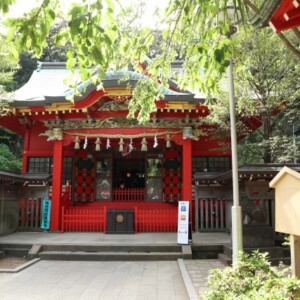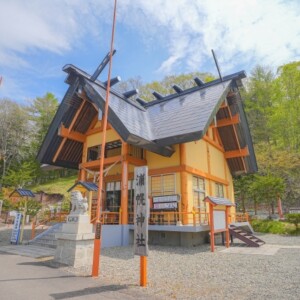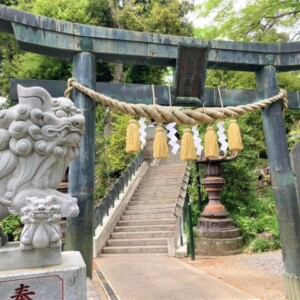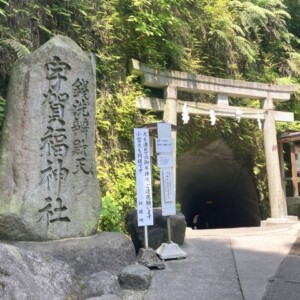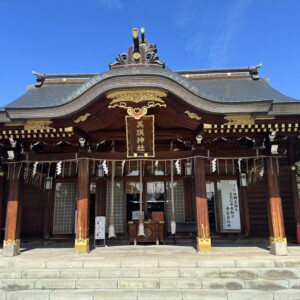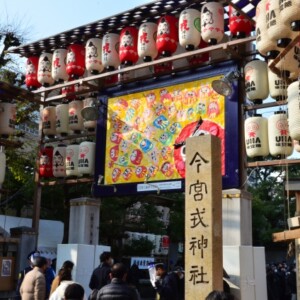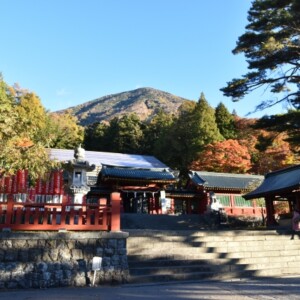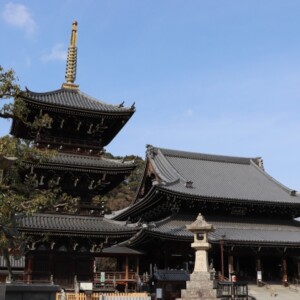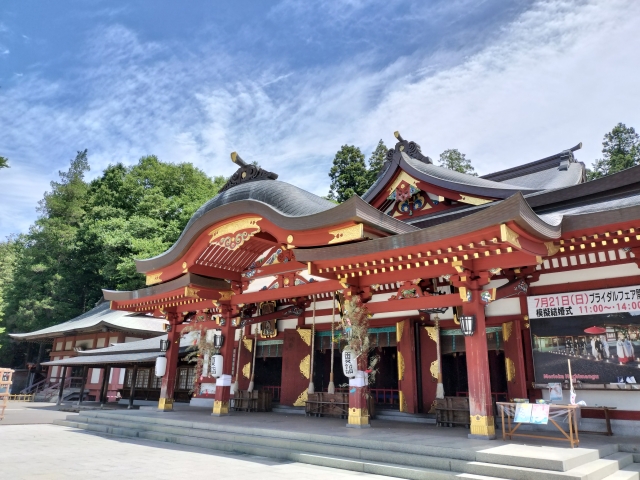
Morioka Hachimangu Shrine|Complete guide to the history, highlights, and worship information of this historic shrine
Morioka Hachimangu Shrine, located in Morioka City, Iwate Prefecture, is the largest shrine in Iwate Prefecture with a history of over 300 years. The shrine, built by the feudal lord of the Nanbu domain, continues to be deeply loved by the local people for its wide range of benefits related to human life, including agriculture, industry, commerce, and academics.
Outline and basic information about Morioka Hachimangu Shrine

Morioka Hachimangu Shrine is a representative shrine of Iwate Prefecture and is familiar to citizens as the “face of Morioka”. The beautiful vermilion-lacquered shrine pavilions are impressive, and the shrine grounds are home to as many as 12 subordinate shrines, making it a special place that offers a wide variety of benefits and is often referred to as a “theme park of shrines.
History and Origin
Morioka Hachimangu Shrine is said to have two origins. One is that it was built in 1062 by Minamoto no Yoriyoshi and his son Minamoto no Yoshie to pray for victory during the Former Nine Years’ War, and the other is the story of the direct origin of the present Morioka Hachiman Shrine.
The present Morioka Hachiman Shrine was built in 1680 by the 29th lord Shigenobu Nanbu. The feudal lord Nanbu was a family that worshipped the Hachiman God as their clan deity, and Hatomori Hachiman Shrine was enshrined within Morioka Castle, but the development of the castle and the promotion of commerce necessitated the construction of a new Hachiman Shrine.
The construction work, which began in 1791, took about eight years, and the main building and facilities, including the main shrine and a horseback archery stable, were completed in Empo 8. At the same time, Hachiman-cho, the town in front of the shrine, was completed, and the area has a history of development together with Morioka Hachiman-gu Shrine.
Deities and Benefits
The main deity of Morioka Hachiman Shrine is Hindawake-no-mikoto (the 15th Emperor Ojin). This deity has long been revered by the people of the region as the root of human life, including agriculture, industry, commerce, learning, and food, clothing, and shelter.
The deity is especially known for its benefits for prosperous business, academic achievement, family safety, and traffic safety, and is visited by many worshippers today with a variety of wishes. Hachimanjin is also believed to be a god of war and to give people the power to overcome challenges and difficulties.
Morioka Hachimangu Shrine Highlights and Features
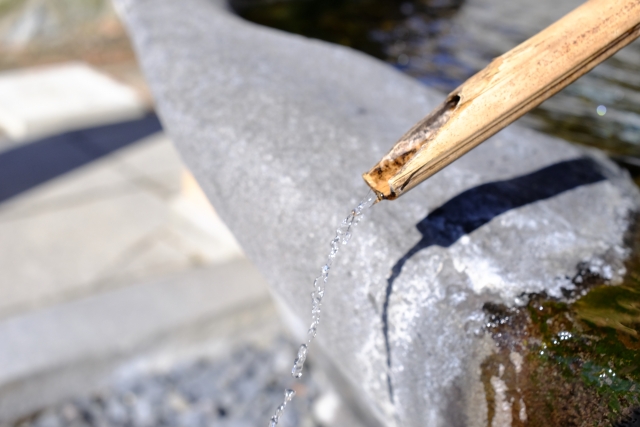
Architectural and Structural Attractions
The current shrine pavilion is a relatively new building, rebuilt as Shin-Hachimangu Shrine in December 1997, but its beauty and prestige are overwhelming. The vermilion-lacquered main shrine pavilions, decorated with colorful carvings, exude an imposing air as the new “face of Morioka.
One of the most notable architectural features of the shrine is the ornate carvings of paulownia flowers, the prefectural flower of Iwate Prefecture, both inside and outside the hall of worship. These decorations are a rare example of incorporating the symbol of Iwate Prefecture into shrine architecture.
The front of the hall of worship has a door that remains closed 24 hours a day so that anyone can visit the shrine at any time of the day, which also shows the consideration for visitors.
Distinctive Facilities on the Temple Grounds
A major feature of Morioka Hachiman Shrine is that it is known as a power spot with as many as 12 shrines within its precincts. Each shrine has different benefits, and visitors can pray according to their own wishes.
Particularly popular is the Kasamori Inari Shrine, which is said to bring good fortune for prosperous business. It is the oldest shrine on the grounds, having been enshrined on the summit of Mt. Hachiman before Morioka Hachiman Shrine was built.
In addition, there are a variety of other auxiliary shrines, such as “Enmusubi Shrine” for the fulfillment of a good marriage, “Umemiya Shrine” for safe delivery and prosperity of offspring, “Takabeshi Shrine” for the god of cooking, and others.
One unique attraction on the temple grounds is a jar for testing one’s luck. Located near the main shrine, this is a popular spot where visitors are told that if they put a one-yen coin in the jar and let it float, it will bring them good luck. The “Meidetai Omikuji,” in which visitors use a fishing line to catch a golden sea bream with a fortune inside, is another playful element that is loved by worshippers.
Seasonal Scenery and Attractions
Morioka Hachimangu Shrine offers beautiful scenery throughout the year. In spring, the shrine grounds are decorated with cherry blossoms, and in autumn, the autumn leaves create a beautiful contrast with the vermilion-lacquered shrine pavilions. In particular, the hand-watering basin in front of the shrine is decorated with seasonal flower arrangements, delighting the eyes of visitors.
The vermilion-lacquered shrine pavilions covered with snow create a majestic beauty. However, some parts of the temple grounds become like a skating rink in the winter, so visitors must be careful with their footing.
Visiting Guide
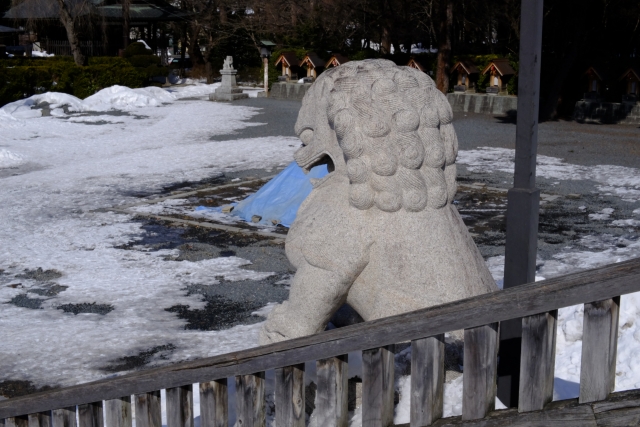
As one of the largest shrines in Iwate Prefecture that welcomes many visitors, Morioka Hachimangu Shrine values the various opportunities and manners of worship. Please understand the correct way to visit the shrine and enjoy a more meaningful worship experience.
Worship Etiquette and Manners
Morioka Hachimangu Shrine is visited according to the general manners of shrine visitation. First, bow when passing through the torii gate at the entrance, and walk along the edge of the path, as the center of the path is considered to be the path of the gods.
At the hand-watering place, purify your left hand, then your right hand, and finally rinse your mouth to purify yourself. The zodiac signs are carved on the approach to the shrine, so you can enjoy walking along the path while finding your own zodiac sign.
At the hall of worship, visitors pray with their wishes in the manner of “ni-ai ni clap, ni-ii shate ippai” (two claps, one hand, one bow). There is a door at the front of the hall of worship, but it is open 24 hours a day, allowing visitors to come and pray at any time. Inside the hall of worship, visitors can also see “Hato Komainu” (dove guardian dogs), and feel the devotion to the doves that are the messengers of Hachiman God.
Annual and Seasonal Events
Morioka Hachimangu Shrine holds a variety of events throughout the year. The most famous is the Morioka Hachimangu Festival, held from September 14 to 16. This festival is said to have started in 1709, and is the largest festival in Morioka, with magnificent floats parading through the town and the heroic Nanbu Yabusame (horseback archery) dedicated to the god of war.
During the float event, floats decorated with dolls based on famous Kabuki and historical scenes parade through the city, and the firefighters (the name of the fire extinguishing team during the festival) play a central role in singing the “ondoage,” a seven-seven-seven-five phrase, with a unique verse.
In the New Year, Hatsumode (New Year’s visit) attracts the largest number of visitors in Iwate Prefecture (more than 200,000), and the “Dondotosai” and “Naked Pilgrimage” are held on January 15, and the “Setsubun Festival” and “Fire Prevention Festival” are held on February 3. It is also known for the “Kayanawa Festival” in June and the “Chagu Chagu Umako” ritual in which horses dressed in brightly colored costumes parade from Aomae Shrine in Takizawa City every June.
Red Seal and Good Luck Charm Information
Morioka Hachimangu Shrine offers a variety of red seals and good luck charms. The red seals are written directly by resident priests and are available from 9:00 am to 5:00 pm. The initial fee is 500 yen and can be paid by leaving a note.
Red seal impression books are also available, one with a blue base and the other with a light pink base. The large-size red seal book costs 3,000 yen and includes the red seals of Morioka Hachiman Shrine and the adjacent Morioka Gokoku Shrine, as well as the red seal bag.
A wide variety of good luck charms are available, including those for romantic fulfillment, health, and traffic safety. Particularly unique amulets include the “Goal Achievement Amulet” and “Successfully Achieving Amulet,” as well as the “Koronde Taruwanuka Amulet,” which is popular during the examination season and makes a great souvenir. The reception hours for the prizes are from 10:00 a.m.
Access and usage information
Morioka Hachimangu Shrine is easily accessible by both public transportation and automobile, and is visited by many worshippers from within and outside of the prefecture.
Access to Morioka Hachimangu Shrine
By public transportation, take the Iwate-ken Kotsu Bus from Bus Stop No. 5 at the East Exit of JR Morioka Station. If you take the “251/252 bound for Chabatake (Nakano 1-chome)” or “422/404/611/612” buses, get off at “Hachimangu-mae” and you are on your way. If you take bus No. 401, 402, 403, 423, or 510, get off at “Sannoshita” and walk about 5 minutes. The bus ride takes about 15-20 minutes, and the fare varies depending on the section.
The route via “Hachimangu-mae” is subject to change due to Hachimangu Shrine’s various events, in which case the route via “Sannoshita” is recommended.
Access by car is about 15 minutes from the Morioka IC of the Tohoku Expressway. It takes about 10 minutes from Morioka Station.
<Address> 13-1 Hachiman-cho, Morioka-shi, Iwate
Hours of Admission, Fees, and Parking Information
Morioka Hachimangu Shrine is open for worship 24 hours a day, and the doors of the shrine are always open. Prayer hours are from 9:00 a.m. to 5:00 p.m., and red seals are accepted during the same hours. There is no fee for visiting the shrine.
Free parking for visitors is available on the grounds of the temple. It is a large parking lot with a capacity of approximately 200 cars. However, during major events such as the annual festival, it may not be available or may be crowded, so we recommend that you consider using a nearby hourly parking lot.
There are several reserved parking lots and coin-operated parking lots in the area, including Times Morioka Hachiman-cho (approx. 4 minutes walk) and Times Morioka Shike-cho (approx. 8 minutes walk). Especially during Hatsumode and regular festivals, it is safer to use a parking lot that can be reserved in advance if you want to be sure of securing a car room.
For those who use wheelchairs, a wheelchair parking lot is available at the top of the Omotesando stairway, near the shrine pavilion, and a ramp is available on the left side of the pavilion.
Reference sites
Morioka Hachimangu Shrine Official Website: https://morioka8man.jp/



